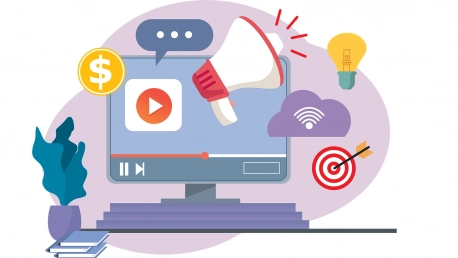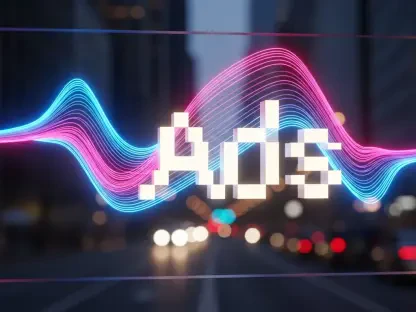When it comes to the success of any business, there’s no denying the importance of marketing. Regardless of the business type or industry, marketing plays a pivotal role in ensuring growth and sustainability. However, with the advent of the digital age, marketing has become increasingly challenging. New techniques, algorithms, and the constant threat of fraudsters mean that companies must stay vigilant to protect their investments. A critical aspect of digital marketing success is understanding the significance of ad verification and the role that location-specific tools like a US proxy play.Ad verification is essential in determining if digital ads are displayed correctly and functioning as intended. With billions spent on digital ads annually, businesses need to ensure their ads are effective and generate revenue. However, ad fraud poses a significant threat, potentially draining advertising budgets and diminishing returns on investment. Understanding and combating this fraud is crucial for maintaining the integrity and efficacy of digital marketing campaigns.
What is Ad Verification?
Ad verification involves marketers or agencies confirming that their digital ads are shown correctly and achieve their intended purpose. Companies invest substantial amounts in digital advertising, with global spending reaching $601.84 billion in 2023, a 9.5% increase from the previous year. Given this significant investment, ensuring ads perform and deliver a return is vital. Companies often hire advertising firms and employ various marketing tools to enhance campaign effectiveness. However, many businesses underestimate the importance of ad verification in improving ad performance and preventing ad fraud.Ad fraud encompasses various tactics used to defraud digital display ads, leveraging the popularity and effectiveness of these marketing strategies. These fraudulent activities exploit the lack of awareness among businesses regarding potential risks, leading to substantial financial losses. By 2028, ad fraud is projected to waste $172 billion in ad spend. Therefore, ad verification is not just about ensuring optimal ad presentation; it’s also a crucial defense against fraudulent activities.
Types of Ad Fraud
Ad fraud manifests in different forms, ranging from simple to highly sophisticated techniques. One common type involves fake accounts and ad bots. Fraudsters create numerous accounts or program ad bots to simulate interactions such as clicks or impressions. These interactions drain the ad spend without yielding any actual purchases, resulting in financial losses for the company. Click fraud, click injection, and click farms are typical examples of this approach.Another prevalent method is simulated traffic. Here, fraudsters manipulate website statistics to make it appear more popular than it is, convincing marketers to pay a premium for ad space. However, due to the falsified statistics, these ads do not perform as expected, wasting the investment. Techniques like geo-masking, domain spoofing, CTV fraud, and device spoofing fall under this category.Impression laundering is another sophisticated ad fraud technique. Fraudsters make ads visible to various impressions without actually displaying them prominently. They may stack multiple ads on top of each other or hide them within a pixel, making them invisible to the human eye but still generating impressions. Pixel stuffing and ad stacking are common examples of this fraudulent tactic.
How to Verify Ads
Ad verification, though complex, is essential for ensuring the success of digital ads. Despite the existence of ad verification tools, they often fall short due to limitations like geo-restrictions and IP bans. However, leveraging a US proxy with a vast pool of local IPs can significantly enhance ad verification efforts. A US proxy allows marketers to monitor and assess their ads from a local standpoint, ensuring they display correctly and function as intended.In addition to using the new IP provided by the US proxy to check ads, pairing it with additional ad verification tools can offer more comprehensive functionality. The tools benefit from a US IP address, making them appear like genuine user activities, thereby avoiding detection and blocking by fraudsters. The capability to set up and use proxies is straightforward enough for individuals unfamiliar with the technology, removing a common barrier to effective ad verification.
Steps to Use Proxies for Ad Verification
1. Activate your proxy and obtain a US IP address
The first step in using proxies for ad verification is to activate your proxy service and secure a US IP address. This step gives you access to a broad range of local IPs essential for checking the display and functionality of your ads. By appearing as a local user, you can bypass certain geo-restrictions and gain accurate insights into how your ads are being presented.
2. Utilize the new IP to inspect your ads on the websites where they are placed
Using the newly acquired US IP, visit the websites where you have placed your ads. This allows you to see the ads from a local perspective, ensuring they appear to potential customers as intended. Checking your ads regularly is crucial in maintaining their effectiveness and identifying any discrepancies that may hinder performance.
3. Ensure the ad appears and functions as you intended
Once you’ve accessed the websites with your US IP, carefully evaluate whether your ads are shown correctly. Ensure that they load quickly, are displayed in the appropriate locations, and that all interactive elements, such as links and buttons, function properly. This step is essential for verifying that your ads provide a seamless user experience and achieve your marketing objectives.
4. Optionally, combine your proxy with additional verification tools and run them
For more robust ad verification, consider combining your proxy with other verification tools. These tools can offer features such as performance analytics, fraud detection, and more. Running these tools with the added benefit of a US IP ensures comprehensive monitoring and protection against ad fraud. This combination enhances your ability to maintain the integrity and success of your digital advertising campaigns.
Final Thoughts
The initial step in employing proxies for ad verification involves activating your proxy service and securing a US IP address. This crucial move allows you to access a wide array of local IPs, which are vital for assessing how your ads are displayed and functioning. When you utilize proxies to simulate a local user, you can successfully circumvent certain geographical restrictions that might otherwise hinder your ability to gather accurate data.Having a US IP address facilitates a more precise evaluation of your ad campaigns. This accuracy is paramount, as it ensures that you see the ads just as a local audience would. By doing so, you can identify any discrepancies or issues in how the ads are being delivered across different regions. This information is invaluable for fine-tuning your ad content and strategy to maximize effectiveness and reach.Moreover, using proxies helps in understanding the user experience from a local perspective. It provides insights into load times, ad placement, and overall performance in a specific region. This data is essential for making informed decisions and optimizing the ads to address any regional issues that could affect user engagement.In summary, the use of proxies in ad verification is indispensable. By securing a US IP address through your proxy service, you ensure that your ad campaigns are accurately assessed and optimized, helping you better understand and serve your target audience. This leads to more effective ad delivery and a higher return on investment.









